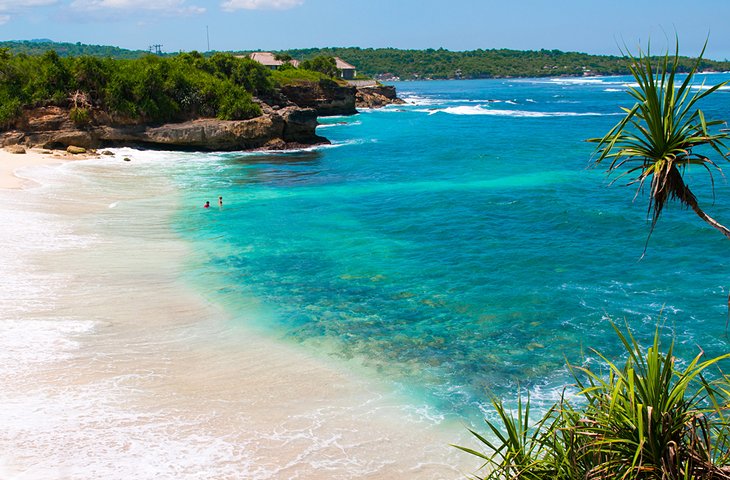Amazing Mediterranean yacht sailing locations and yacht sailing recommendations 2021 by IntersailClub

Awesome Mediterranean yacht sailing destinations in 2021? Reliably breezy, Sardinia is an Italian sailing yacht haven. With a pleasant six-month summer period where it is hot and dry from May to October, Sardinia’s location in the centre of the Mediterranean means the moderate winds are consistent. Mild off-season months offer a good deal of sunshine with warm days to enjoy time on the water, particularly during March and April, while Mistral winds mitigate the heat of the summer months and providing some excellent sailing opportunities. Generally, the prevailing north-westerly winds blow at 20-25 knots daily with a small tidal range of 20-40cm. The world-famous Costa Smeralda, known for its superb beaches and myriad of coves and bays, is a big attraction, while chic ports such as Porto Cervo and Porto Rotondo offer exceptional facilities. For quiet and scenic beauty, the Maddalena Islands with National Park and Marine Reserve should not be missed. Sailing in these crystalline waters is a great way to experience the other side of the Emerald Coast where nature prevails.
A sailing holiday around France covers some of the most famous Mediterranean beaches and European port towns. The French Riviera is one of the most sought-after yachting destinations in Europe – with many well-known towns, cities, and beaches along this coast. Some of the best destinations here for a cruising holiday include Corsica, Saint-Tropez, Cannes, Nice, Lorient, and many more. These are places that attract the rich and famous – so you can expect plenty of luxuries to be enjoyed in the towns. The French Riviera is one of the most popular destinations in Europe for a sunny sailing holiday. This is thanks to the magnificent beaches, picture-perfect towns, azure waters and calm sailing routes.
The French Riviera has no shortage of trendy outposts, but St Tropez earns extra points for its recent revamp along Pampelonne Beach. YachtCharterFleet had the pleasure of heading down to St Tropez last year to check it out; and came back with some first-hand insight into the new (eco-friendly) beach club scene. After a morning exploring the pink streets of St Tropez, cruise over to Pampelonne in time for lunch. Be sure to book ahead for Club 55, the most iconic venue in the Cote d’Azur, and try and reserve a coveted table in the later lunchtime slot if you’re looking to rub shoulders with Hollywood heavyweights and the A-list elite. For some post-lunch entertainment, head to Verde Beach. Expect blast-from-the-past beats and dancing on the tables, as the St Tropez in-crowd transform Verde Beach into the most happening party in Pampelonne. Head back to the main port for dinner- L’Opera has got the ‘the dinner and a show’ concept down to an art.
Why the Mediterranean? The Mediterranean Sea separates Europe from Africa, and it is almost entirely surrounded by the land of the Mediterranean Basin. The Mediterranean is known as one of the world’s finest travel destinations, that invites you to set on an unforgettable journey and sail the coastlines of some of the twenty-one Mediterranean countries. The Mediterranean is home to some of the world’s most popular summer destinations and hot spots for sailing due to its pleasant climate, turquoise sea, ancient ruins, famous Mediterranean food, and stunning architecture. See extra details at yacht charters for holiday. Consider including some of the following in your Greece sailing itinerary: Sail in the country’s blue waters from one island to another, and visit famous islands of the Cyclades archipelago, such as Santorini, Paros, Mykonos, Milos, Ios, or Naxos. Explore the Sporades (Skiathos, Skopelos, Skyros, and Ionnisos) and the Dodecanese (Kos, Rhodes, Symi, and Kastellorizo). Sail around Crete. Adrift to Ionian islands of Lefkada, Corfu, Kefalonia, and Zakynthos.
The type of charter contract applicable to your charter will depend on where in the world you are cruising, as there are various terms within the industry which dictate how the payment structure is determined. For instance, a MYBA (Worldwide Yachting Association, formerly known as Mediterranean Yacht Brokers Association) contract operates under Western Mediterranean Terms (WMT) and is arguably the most commonly used, particularly with large yachts embarking on a Mediterranean yacht charter. This contract is often referred to as a “plus all expenses” contract and requires that the charterer pay for fuel, food, beverages and dockage fees as an additional expense outside of the base charter fee. Typically, guests can accumulate an additional 25% to 50% of the base charter fee though this is dependent on what is consumed. These expenses can be tracked through the use of an Advance Provisioning Allowance (APA) which we will cover in the next section. Three different 30-metre charter yachts may vary in cost by as much as 75,000 Euros. Ask your broker to explain the differences. One yacht may have a larger and more experienced crew or a big-name chef, another yacht may be a little tired, another may not be in a prime location. It’s important to understand why the prices are higher or lower.
Yachting tip of the day: One of the ancient arts of the sailor is setting up a “stopper” to relieve a loaded rope without letting anything go. The classic use for a stopper is to take the weight off the genoa sheet when Cousin Doofus has carelessly locked up the whole shooting match with an override. My crew recently used the stopper shown below. It took the load at the turning block while we sorted out the mess. Then we wound the sheet in a few inches to relieve the force on the stopper, removed it and sailed on. To create a stopper that works, clap on a half-hitch before the rolling hitch as shown. You can see it doing the work, and it guarantees success. If you can’t tie a rolling hitch, go on the internet and learn how. You may need it sooner than you think!
When the day is over, a broad offer of hotels and accommodations will be waiting for you, from internationally prestigious establishments to good boutique hotels, from beach resorts offering all-inclusive services to cosy rural villas for those looking for a relaxing stay away from tourist spots. For the best views of the uninhabited, 400m-tall (1,312ft) El Vedra rock-island, head to Cala d’Hort. This gorgeous stretch of sand is lapped by some of the most picture-perfect waters in Ibiza and backs onto a cluster of great chiringuitos (beach bars). Like many of the island’s must-visit beaches, d’Hort is not huge, so arrive early for a decent spot; once settled, you can enjoy the views and bathing as well as some of Ibiza’s best snorkelling. And when it gets too hot, simply wander into one of the beach bars for a cold one and a plate of fresh prawns. Discover extra details at IntersailClub.
You might not always get the good weather but this part of the UK equals many of its European rivals in beauty. Over 95 miles of uniquely formed ancient coastline stretch all the way from East Devon to Dorset. Otherwise known as the Jurassic Coast, some of the rock formations here are 185 million years old and its England’s first natural World Heritage Site. Set sail from Weymouth Harbour and stop off at all the local beauty spots – Durdle Door, Lulworth cove and countless historic coastal villages.
